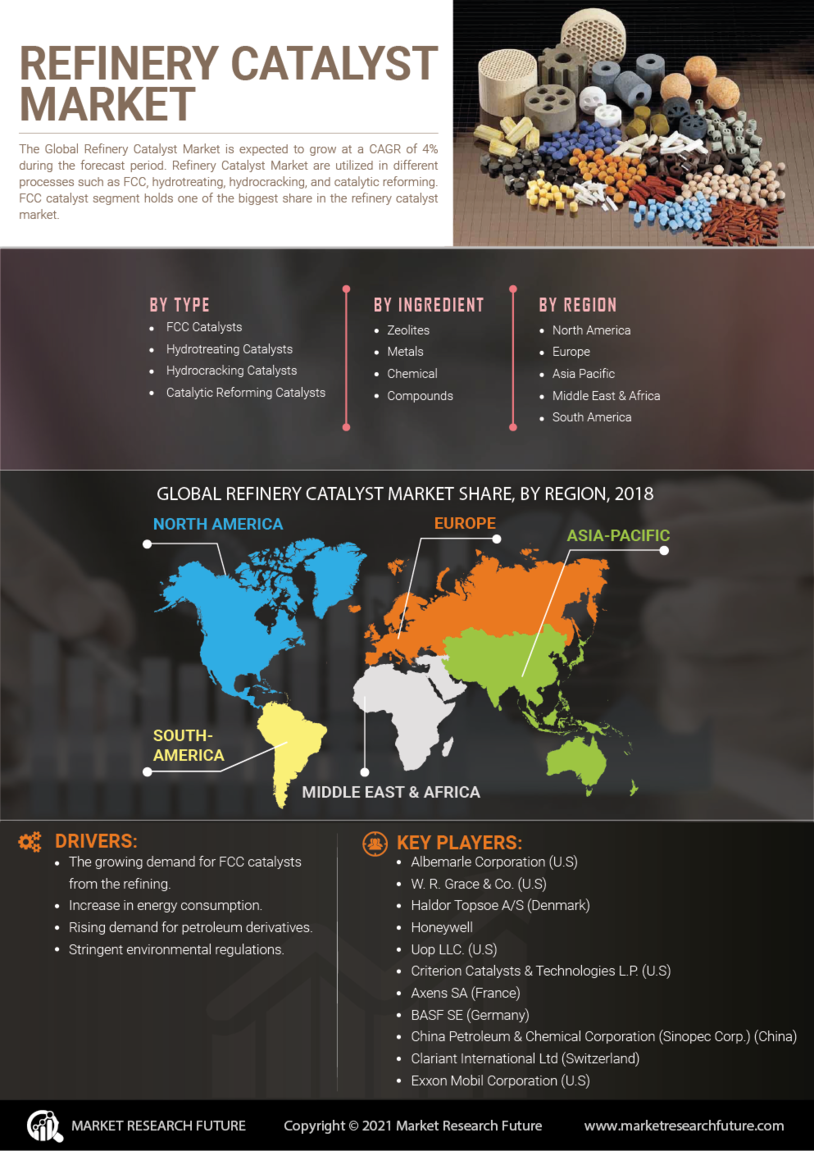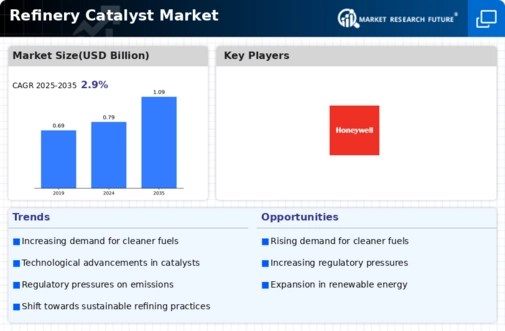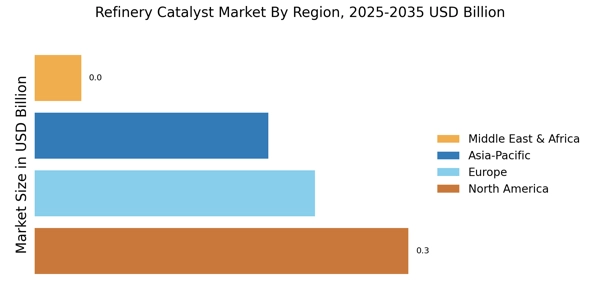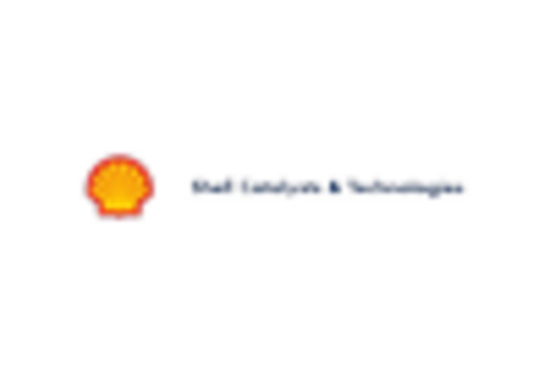Rising Oil Refining Capacity
The expansion of oil refining capacity is another significant driver in the Refinery Catalyst Market. As countries seek to enhance their energy security and reduce dependence on imported fuels, investments in refining infrastructure are increasing. This expansion often necessitates the use of advanced catalysts to optimize production processes and improve yield. Recent reports indicate that several regions are planning to increase their refining capacities, which could lead to a heightened demand for catalysts. The Refinery Catalyst Market is likely to benefit from this trend, with projections suggesting a growth rate of approximately 4.5% as new refineries come online.
Increasing Demand for Clean Fuels
The rising demand for clean fuels is a pivotal driver in the Refinery Catalyst Market. As environmental regulations tighten, refineries are compelled to produce fuels with lower sulfur and carbon content. This shift necessitates advanced catalysts that enhance the efficiency of hydrocracking and hydrotreating processes. According to recent data, the market for clean fuels is projected to grow at a compound annual growth rate of approximately 5.2% over the next five years. Consequently, the Refinery Catalyst Market is likely to witness a surge in demand for innovative catalysts that can meet these stringent requirements, thereby driving market growth.
Shift Towards Petrochemical Production
The shift towards petrochemical production is reshaping the Refinery Catalyst Market. As the demand for petrochemicals continues to rise, refineries are adapting their operations to produce more of these valuable chemicals. This transition requires specialized catalysts that can facilitate the conversion of crude oil into petrochemical feedstocks. Market analysis indicates that the petrochemical sector is expected to grow at a rate of 6.0%, driving the need for innovative catalysts. Consequently, the Refinery Catalyst Market is poised for growth as refineries invest in catalysts that enhance their ability to produce petrochemicals efficiently.
Technological Advancements in Catalysts
Technological advancements play a crucial role in shaping the Refinery Catalyst Market. Innovations in catalyst formulations and manufacturing processes have led to the development of more efficient and durable catalysts. For instance, the introduction of nanotechnology in catalyst design has improved performance and selectivity, which is essential for optimizing refinery operations. The market is expected to see a significant increase in the adoption of these advanced catalysts, with estimates suggesting a growth rate of around 4.8% annually. This trend indicates that refineries are increasingly investing in cutting-edge technologies to enhance their operational efficiency and reduce costs.
Regulatory Compliance and Environmental Standards
Regulatory compliance is a driving force in the Refinery Catalyst Market. Governments worldwide are implementing stricter environmental standards to combat pollution and promote sustainable practices. These regulations often mandate the use of advanced catalysts that can effectively reduce emissions and improve fuel quality. As a result, refineries are investing heavily in catalyst technologies that align with these regulations. The market is projected to expand as refineries seek to comply with evolving environmental standards, with a potential growth rate of 5.5% in the coming years. This trend underscores the importance of regulatory frameworks in shaping the catalyst landscape.


















Leave a Comment